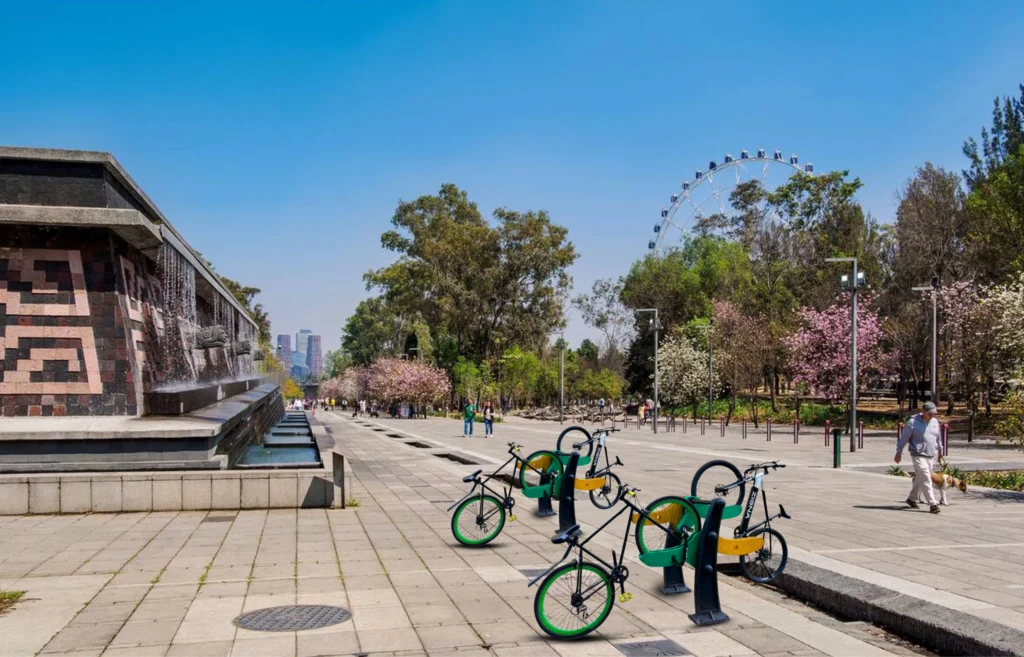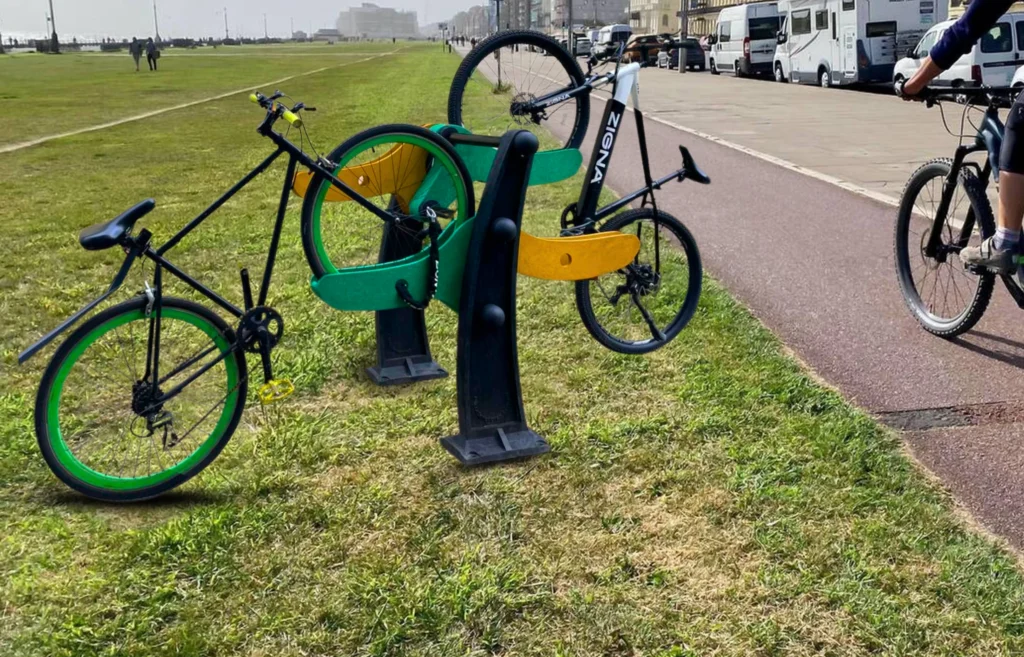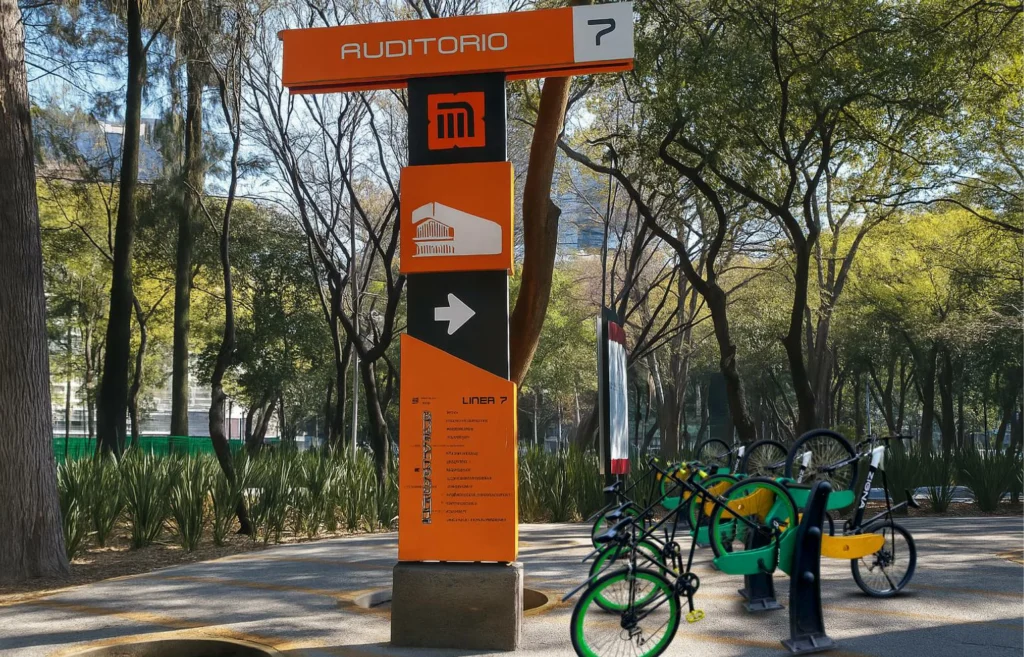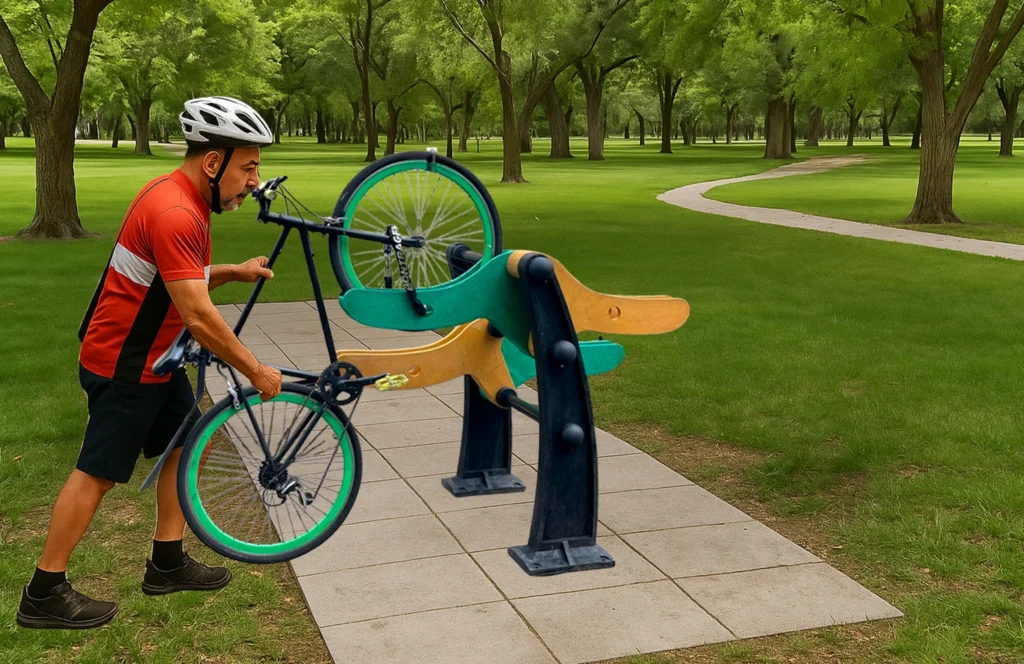Cycling through the city is becoming increasingly common—especially in densely populated areas and across metropolitan zones. Yet despite its growing popularity, many cyclists still face the same daily question: Where can I safely leave my bike?Secure bicycle parking provides a practical answer to this need, offering dedicated spaces designed to protect your bike while you work, study, or enjoy your day. It’s a simple solution with the power to make urban mobility more accessible, efficient, and sustainable..
More than just a place to park, a bike parking facility is part of a broader network of spaces that support urban mobility and positively influence how people move through the city. Having one nearby means you can ride with peace of mind—without worrying about damage or theft when you leave your bike behind.
Key benefits of bicycle parking facilities
A well-designed bicycle parking facility offers safety and convenience for cyclists—but its benefits extend far beyond the individual. It helps reduce bike theft, prevents cluttered sidewalks, and encourages more people to leave their cars at home. The result: less traffic, cleaner air, and more public space for walking, gathering, and enjoying the city.
In cities like Mexico City, the Ministry of Mobility (SEMOVI) has implemented various types of bicycle parking facilities—from simple racks to large, secure structures with controlled access. The key lies in their strategic location: near parks, shopping centers, high-traffic areas, and public transportation hubs like the subway and urban bus stations.
This integration allows cyclists to combine different modes of travel more efficiently—such as biking plus public transit—ultimately saving time and money while promoting more sustainable urban mobility

When infrastructure adapts to you
Among the most versatile solutions is the modular bicycle parking system. This model allows the number of spaces to be scaled according to local demand. If a small plaza only requires ten spots, a compact module can be installed; in contrast, a university campus or office complex in the heart of a metropolitan area can be equipped to accommodate dozens—or even hundreds—of bicycles.
Made from durable materials, these bicycle parking units are designed to withstand rain, sun, and heavy daily use without fading or deforming. Their straightforward installation requires no major construction work, allowing them to be easily placed in side corridors, central plazas, or thoroughfares—always ensuring high visibility and user convenience.
A design made with cyclists in mind
A well-designed bicycle parking facility not only protects bikes but also makes life easier for the user. Cyclists should be able to park their bike effortlessly, secure it quickly, and avoid contact with neighboring bikes. The ideal design offers ample space between each unit, provides access from multiple angles, and is located in a well-lit area.
Modular models stand out because they adapt seamlessly to any environment—from a school courtyard to the plaza of a government building. This flexibility makes them a smart investment for authorities, businesses, and developers aiming to promote cleaner, more organized urban mobility.

A step towards safer and more connected cities
Each bicycle parking facility installed is a vital component of a well-planned mobility system. When these spaces are strategically located alongside bike lanes and public transportation hubs, the result is a connected network that simplifies travel and reduces the reliance on cars.
This not only positively impacts air quality but also enhances road safety and street order. Cities that invest in this infrastructure demonstrate that prioritizing bicycles is not just a trend—it’s a concrete strategy for building a healthier future.
Bicycle parking that transforms cities: The role of metropolitan areas and communities
In a metropolitan area, where thousands of people commute daily between neighborhoods or districts, bicycle parking plays a key role in connecting residential areas with workplaces. Imagine leaving your home, cycling to a public transit station, parking your bike in a secure spot, and continuing your journey by metro or bus. This saves time, reduces expenses, and helps alleviate traffic congestion.

Additionally, communities with well-distributed bicycle parking facilities become more active, foster stronger social interaction, and boost local commerce, as cyclists can easily arrive and park their bikes with peace of mind.
Connecting cyclist mobility
Bicycle parking is most effective when it forms part of a well-planned network of locations covering both urban centers and metropolitan areas. To achieve this, different types of networks are used—from wide-area networks connecting long distances to local networks ensuring coverage in specific neighborhoods. These connections operate on a point-to-point model, linking stations and enabling seamless integration with the broader mobility system.
This approach strengthens active mobility and promotes smart transportation, enabling cyclists to choose routes that combine biking with metro or other public transit systems. Additionally, it integrates with various transport services—whether public or private—offering more options for those who combine different modes of travel in their daily lives. Even in small parks or plazas, well-placed bicycle parking creates a positive community impact and enhances the experience of daily commuters.
Bicycle parking that transforms cities: Safe bikes, vibrant cities
Investing in bicycle parking means investing in a cleaner, more organized city designed for people. Every bike safely parked represents one less car on the road, resulting in less noise, less pollution, and a healthier urban environment.
A wide network of bicycle parking encourages more people to ride, creates safer public spaces, and strengthens the sense of community. It doesn’t require massive investments—just the commitment to give bicycles the place they deserve within urban planning.
If you want to learn more about the various bicycle parking options, feel free to visit this site or explore our modular safe solutions bicycleparking here.

